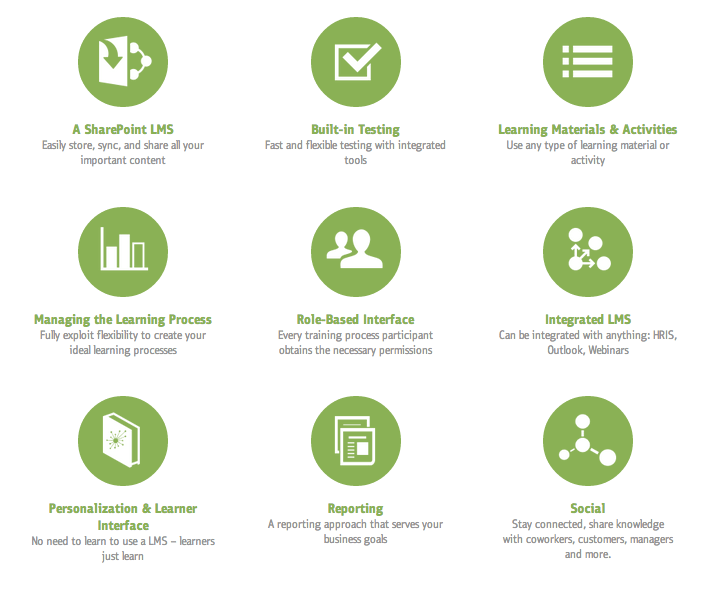How You Can Save Using Microsoft SharePoint
Companies that are in the market to purchase an LMS will need to focus on key cost elements of implementing and operating a training system. Here is a list of the most useful cost elements to consider during the pre-purchase LMS evaluation.
1. What Are The Costs Or Additional Server Hardware And Operational Software?
Examples include database technology, document management and workflow solutions. These systems help support the LMS. With SharePoint users that adopt a SharePoint-based LMS, the incremental costs associated are zero.
2. What Are The License Costs?
Meaning, what are the license costs for a SharePoint-based on-premise LMS vs. non-SharePoint on-premise LMS and non-SharePoint SaaS offerings? An LMS-SharePoint combination’s per-user-per month costs are competitive and LMS-SharePoint combo adopters avoid the additional costs of retraining systems administrators and end users, and the risks of off-premises data storage.
3. What Are The One-Time LMS Implementation Costs?
These costs include software installation and related activities, Single Sign-on (SSO) setup, and LMS integration with systems of record. A SharePoint-based LMS uses Active Directory user data for SSO and user system of record integration already in place for SharePoint, so there are no extra costs.
4. What Are The Ongoing LMS Support Costs?
These costs include applying updates to underlying platform and database software, training of administrators, administration of users, and management of server hardware and software. A SharePoint-based LMS offers low ongoing support costs because it integrates directly to SharePoint and benefits from all software, hardware maintenance, administrator training, and user administration already provided for SharePoint.
5. What Are The Costs And Challenges Of Supporting End-Users With A New LMS?
New software always requires significant end-user training, help-desk support, and hand-holding to ensure sustainable adoption. An LMS incorporated into SharePoint avoids the cost of and resistance to new LMS software because it looks and feels “right” to SharePoint users, and fits into help-desk support organizations of existing SharePoint communities.
An LMS-SharePoint combination offers compelling implementation, operational cost, and ease-of-use advantages over competitive non-SharePoint-based LMS installations, and is cost-competitive with non-SharePoint-based SaaS LMS solutions. At the same time, a SharePoint-based LMS offers all the familiarity, security, and manageability that users appreciate most in their existing SharePoint environment.
For more on how much it will cost you to buy a new Learning Management System, download the free eBook How Much Will You Really Pay For Your New LMS?.
Related Articles:
- How Much Will You Really Pay For Your New LMS? Part II: On-Premise LMS – A True Cost Analysis
- Free eBook: How Much Will You Really Pay For Your New LMS?
- How Much Will You Really Pay For Your New LMS? Part I: Cloud LMS – A True Cost Analysis
- 5 Advantages Of A SharePoint-Based LMS








